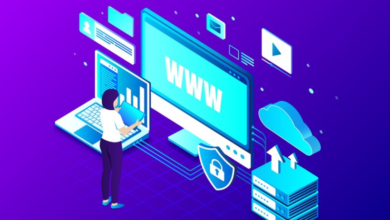Email marketing continues to be an indispensable tool for businesses aiming to connect with their audience, drive sales, and build lasting relationships. Cliqly, with its user-friendly platform and advanced features, is designed to streamline your email marketing efforts and maximize your campaign success.
Overview
Cliqly is an email marketing platform that provides businesses with the tools they need to create, send, and analyze email campaigns. Its intuitive interface and robust features make it suitable for both beginners and seasoned marketers.
Benefits
- User-Friendly Interface: Cliqly offers a straightforward, easy-to-navigate interface, making it accessible for users of all skill levels.
- Advanced Analytics: Detailed reporting and analytics tools help you track the performance of your campaigns and make data-driven decisions.
- Automation Capabilities: Automate your email marketing efforts to save time and ensure timely communication with your audience.
- Customization Options: A wide range of templates and customization options allow you to create visually appealing and effective emails.
Key Features
- Drag-and-Drop Editor: Easily design emails with a user-friendly drag-and-drop editor.
- Segmentation and Targeting: Target specific segments of your audience with personalized content.
- Automation: Set up automated workflows to engage your audience without manual intervention.
- Detailed Reporting: Access comprehensive reports to measure the success of your campaigns.
- Integrations: Connect Cliqly with other tools and platforms to enhance your marketing efforts.
Getting Started with Cliqly
Creating an Account
Setting up your Cliqly account is a straightforward process. Simply visit the Cliqly website, click on the “Sign Up” button, and follow the on-screen instructions. You’ll need to provide basic information such as your name, email address, and company details.
Navigating the Dashboard
Once your account is set up, you’ll be taken to the Cliqly dashboard. The dashboard is the central hub where you can manage all aspects of your email marketing campaigns. Key sections include:
- Campaigns: Create and manage your email campaigns.
- Lists: Manage your subscriber lists.
- Reports: Access detailed reports on your campaign performance.
- Automation: Set up automated workflows and trigger-based emails.
Basic Settings
Before you start creating your campaigns, it’s important to configure your basic settings. This includes setting up your sender name and email address, customizing your email footer to include necessary legal information, and connecting any integrations you plan to use.
Setting Up Your Email Campaigns
Choosing a Template
Cliqly offers a variety of templates to choose from. Whether you’re running a promotional campaign, a newsletter, or an event invitation, you’ll find a template that suits your needs. Choose a template and customize it to match your brand’s look and feel.
Customizing Content
With Cliqly’s drag-and-drop editor, customizing your email content is easy. Add images, text, buttons, and other elements to create an engaging email. Make sure to maintain a balance between visuals and text to keep your email visually appealing and readable.
Setting Up Recipients
Segment your audience to ensure your emails are targeted and relevant. Cliqly allows you to create segments based on various criteria such as demographics, past behavior, and engagement levels. This ensures that your message reaches the right people.
Advanced Campaign Strategies
A/B Testing
A/B testing, or split testing, is a method to compare two versions of an email to see which performs better. Test different subject lines, content, images, or call-to-action buttons to determine what resonates most with your audience.
Segmentation
Segmentation involves dividing your subscriber list into smaller groups based on specific criteria. This allows you to send more personalized and relevant emails, which can lead to higher engagement rates. Common segmentation criteria include location, purchase history, and engagement level.
Personalization
Personalizing your emails can significantly increase their effectiveness. Use your subscribers’ names, recommend products based on their past purchases, or send birthday greetings. Personalized emails can help build a stronger connection with your audience.
List Building Techniques
Opt-In Forms
Create compelling opt-in forms to capture new subscribers. Place these forms on your website, blog, and social media pages. Offer incentives like discounts, free resources, or exclusive content to encourage sign-ups.
Landing Pages
Design dedicated landing pages to drive email sign-ups. These pages should have a clear call-to-action and highlight the benefits of subscribing to your email list. Use engaging visuals and persuasive copy to convert visitors into subscribers.
Lead Magnets
Offer valuable lead magnets such as eBooks, whitepapers, checklists, or webinars in exchange for email addresses. Make sure the lead magnet is relevant to your audience and provides genuine value.
Email Design Best Practices
Responsive Design
Ensure your emails look great on all devices by using responsive design. Test your emails on various devices and email clients to make sure they render correctly.
Visual Hierarchy
Use visual hierarchy to guide readers through your email. Place the most important information at the top, use headings and subheadings to break up text, and use images and buttons to draw attention to key elements.
CTA Optimization
Your call-to-action (CTA) is a crucial element of your email. Make sure it stands out by using contrasting colors, clear and concise text, and placing it in a prominent location. Test different CTAs to see which ones perform best.
Writing Compelling Email Content
Subject Lines
Your subject line is the first thing recipients see, so it needs to grab their attention. Keep it short, clear, and compelling. Use personalization, curiosity, urgency, or humor to entice recipients to open your email.
Preheaders
The preheader, or preview text, appears next to the subject line in the inbox. Use this space to provide additional context or a teaser for the content inside the email. This can help increase your open rates.
Body Content
Keep your body content concise and to the point. Use a conversational tone, break up text with images and bullet points, and include clear CTAs. Make sure your content provides value to the reader and aligns with the promise made in the subject line.
Automation and Workflows
Setting Up Automated Emails
Automated emails save time and ensure timely communication with your audience. Set up welcome emails, thank-you emails, and follow-up emails to engage subscribers without manual effort.
Drip Campaigns
Drip campaigns involve sending a series of emails over time to nurture leads and guide them through the sales funnel. Plan your drip campaigns carefully to provide value and keep subscribers engaged at each stage.
Trigger-Based Emails
Trigger-based emails are sent based on specific actions taken by subscribers, such as abandoning a cart or completing a purchase. These emails are highly relevant and can drive significant engagement and conversions.
Analyzing Campaign Performance
Key Metrics
Monitor key metrics such as open rates, click-through rates, conversion rates, and unsubscribe rates to gauge the performance of your campaigns. These metrics provide insights into what’s working and what needs improvement.
Reporting Tools
Use Cliqly’s reporting tools to access detailed analytics. Track the performance of individual emails and campaigns, and compare them to industry benchmarks to identify areas for improvement.
Analyzing Results
Analyze the results of your campaigns to understand your audience’s preferences and behaviors. Use this data to refine your strategies, optimize your content, and improve future campaigns.
Integrations with Other Tools
CRM Integration
Integrate Cliqly with your CRM to streamline your marketing and sales efforts. Sync your contact data, track interactions, and ensure seamless communication between your email marketing and CRM systems.
Social Media Integration
Leverage social media integration to amplify your email campaigns. Share your emails on social media platforms, encourage social sharing, and use social data to enhance your segmentation and targeting.
E-commerce Integration
Integrate cliqly email marketing with your e-commerce platform to create personalized email campaigns based on purchase history and behavior. Send product recommendations, abandoned cart reminders, and post-purchase follow-ups to drive sales and customer loyalty.
Deliverability and Compliance
Avoiding Spam Filters
To ensure your emails reach the inbox, follow best practices to avoid spam filters. Use a reputable email service provider, maintain a clean email list, and avoid spammy language and excessive punctuation.
GDPR Compliance
If you have subscribers in the European Union, it’s essential to comply with GDPR regulations. Obtain explicit consent from subscribers, provide clear privacy information, and offer easy opt-out options.
CAN-SPAM Act
In the United States, the CAN-SPAM Act sets rules for commercial emails. Ensure your emails include a valid physical address, a clear way to opt-out, and honest subject lines.

Customer Engagement Tactics
Interactive Emails
Incorporate interactive elements such as surveys, polls, quizzes, and GIFs to engage your audience. Interactive emails can boost engagement rates and provide valuable insights into your subscribers’ preferences.
Polls and Surveys
Use polls and surveys to gather feedback from your subscribers. This can help you understand their needs, preferences, and pain points, allowing you to tailor your content and offerings accordingly.
Gamification
Gamify your emails by adding elements of competition and rewards. This can increase engagement and create a fun, memorable experience for your subscribers.
Managing Your Email Lists
Segmentation Strategies
Implement segmentation strategies to target different groups within your subscriber list. This can lead to higher engagement and more effective campaigns. Use criteria such as location, purchase history, and engagement levels for segmentation.
List Hygiene
Regularly clean your email list to remove inactive subscribers and invalid email addresses. This helps maintain high deliverability rates and ensures you’re reaching an engaged audience.
Re-engagement Campaigns
Run re-engagement campaigns to win back inactive subscribers. Offer special incentives, ask for feedback, or remind them of the benefits of staying subscribed.
Case Studies and Success Stories
Real-Life Examples
Learn from real-life examples of successful email campaigns. Analyze what worked, what didn’t, and how you can apply these insights to your own campaigns.
Best Practices from Successful Campaigns
Discover best practices from top-performing campaigns. These can provide valuable insights and inspiration for your own email marketing efforts.
Troubleshooting Common Issues
Delivery Issues
If your emails aren’t reaching your subscribers, investigate potential delivery issues. Check your sender reputation, ensure your email content is compliant, and monitor your bounce rates.
Bounce Rates
High bounce rates can indicate issues with your email list or content. Identify the cause of bounces and take corrective actions to reduce them.
Low Engagement
If your engagement rates are low, analyze your content, subject lines, and targeting strategies. Experiment with different approaches to see what resonates best with your audience.
Email Marketing Trends for 2024
Personalization
Personalization continues to be a major trend in email marketing. Use data to create highly personalized and relevant emails that speak directly to your subscribers’ interests and needs.
AI Integration
AI integration can enhance your email marketing efforts by providing insights, automating tasks, and optimizing content. Use AI tools to analyze data, predict trends, and improve campaign performance.
Predictive Analytics
Leverage predictive analytics to anticipate your subscribers’ behaviors and preferences. This can help you create more targeted and effective email campaigns.
Cost and Pricing Plans
Comparing Plans
Cliqly offers various pricing plans to suit different business needs and budgets. Compare the features and benefits of each plan to choose the one that best fits your requirements.
Choosing the Right Plan for Your Business
Consider factors such as the size of your email list, the frequency of your campaigns, and your budget when choosing a plan. Opt for a plan that provides the features you need at a price you can afford.
Tips for Small Businesses
Budget-Friendly Strategies
Implement budget-friendly strategies to make the most of your email marketing efforts. Use free tools, focus on organic list building, and optimize your campaigns for maximum ROI.
Leveraging Free Tools
Take advantage of free tools and resources to enhance your email marketing. From design tools to analytics platforms, there are many free options available to help you succeed.
Building a Brand with Email Marketing
Consistent Branding
Ensure your emails consistently reflect your brand’s voice, style, and values. This helps build brand recognition and trust among your subscribers.
Storytelling Techniques
Use storytelling techniques to make your emails more engaging and relatable. Share customer stories, behind-the-scenes content, and other narratives that resonate with your audience.
Building Trust
Build trust with your subscribers by being transparent, providing value, and delivering on your promises. Trust is essential for long-term relationships and customer loyalty.
ROI Calculation and Optimization
Measuring ROI
Calculate the ROI of your email marketing campaigns by comparing the revenue generated to the costs incurred. This helps you understand the effectiveness of your efforts and identify areas for improvement.
Optimizing for Better Returns
Optimize your campaigns for better returns by testing different elements, analyzing performance data, and making data-driven decisions. Continuously refine your strategies to maximize ROI.
Creating a Content Calendar
Planning Ahead
Plan your email content ahead of time by creating a content calendar. This ensures a consistent flow of communication and helps you stay organized.
Seasonal Campaigns
Incorporate seasonal campaigns into your content calendar. These can drive engagement and sales by tapping into timely events and trends.
Content Ideas
Generate content ideas that resonate with your audience. Consider topics such as industry news, tips and advice, product updates, and special promotions.
Engagement Beyond Email
Cross-Channel Marketing
Enhance your email marketing efforts with cross-channel marketing. Use social media, content marketing, and paid advertising to support your email campaigns and reach a wider audience.
Retargeting Strategies
Implement retargeting strategies to re-engage visitors who didn’t convert. Use email to follow up with these potential customers and encourage them to complete their purchase.
Best Time to Send Emails
Analyzing Data
Analyze your email performance data to determine the best time to send emails. Consider factors such as open rates, click-through rates, and conversion rates.
Industry Benchmarks
Refer to industry benchmarks to get an idea of optimal sending times. These can serve as a starting point for your own testing and adjustments.
Testing and Adjusting
Test different sending times to see what works best for your audience. Continuously adjust your strategy based on the results to maximize engagement.
Leveraging User-Generated Content
Customer Reviews
Incorporate customer reviews into your emails to build trust and credibility. Positive reviews can serve as powerful social proof and encourage conversions.
Social Proof
Use social proof to enhance your emails. Highlight customer testimonials, user-generated photos, and other forms of social proof to build credibility.
Community Building
Encourage community building by featuring user-generated content in your emails. This can foster a sense of belonging and loyalty among your subscribers.
Mobile Optimization
Mobile-Friendly Designs
Ensure your emails are mobile-friendly by using responsive design. Test your emails on various devices to make sure they look great and function properly.
Importance of Mobile Optimization
With the majority of emails being opened on mobile devices, mobile optimization is crucial. A mobile-friendly email can significantly improve your engagement rates and overall effectiveness.




